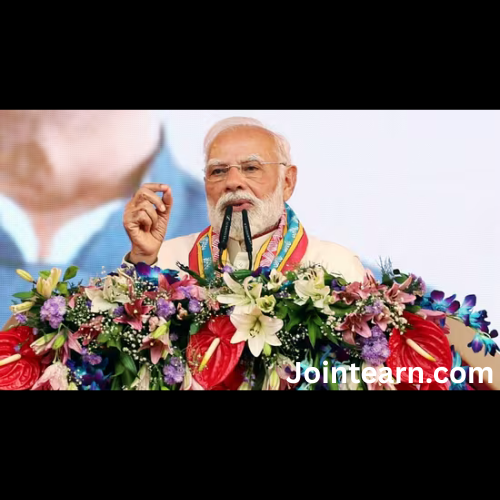The introduction of the Ernakulam–Bengaluru Vande Bharat Express marks another significant step forward in India’s ongoing expansion of its semi-high-speed rail network. Set to be inaugurated on November 8, the new service promises to transform the travel experience between the two major southern cities by reducing journey time by more than two hours. When launched, the train will complete the entire distance in just 8 hours and 40 minutes, offering a faster, cleaner, and more efficient mode of transport for thousands of daily commuters, business travellers, students, and tourists who rely on this route.
This Vande Bharat service is particularly noteworthy for Kerala, as it will function as the state’s first inter-state Vande Bharat train connecting directly with Tamil Nadu and Karnataka. Its inauguration marks an important upgrade in southern connectivity, knitting together a stretch of vital commercial, educational and information technology hubs across the three states. The introduction reflects both regional aspirations and national priorities aimed at strengthening fast, reliable rail mobility across India’s rapidly urbanising centres.
Prime Minister Narendra Modi will inaugurate the train through videoconferencing from Varanasi, where he is scheduled to preside over the central event. The ceremony forms part of a larger series of inaugurations, with three additional Vande Bharat services — Banaras–Khajuraho, Lucknow–Saharanpur, and Firozpur–Delhi — being launched simultaneously. This coordinated expansion reflects the scale and pace at which India is pushing to establish a more comprehensive network of semi-high-speed rail corridors across the country, linking both metro cities and emerging regional centres.
The Ernakulam–Bengaluru Vande Bharat will operate between Ernakulam Junction and KSR Bengaluru, providing a direct link between two major southern metropolitan regions. For Kerala, the train’s introduction is seen as a breakthrough after sustained public demand for faster interstate connectivity. According to officials, this new service is expected to significantly ease travel times for professionals working in Bengaluru but residing in Kerala, as well as students and business travellers who frequently move between the two states. The improved speed and reduced travel duration are expected to enhance regional economic integration and increase convenience for long-distance commuters.
Southern Railway confirmed that with the addition of this service, a total of twelve pairs of Vande Bharat Express trains will now operate across its zone. This signifies the growing presence of the flagship train model in South India, which has seen rapid growth in passenger demand for faster and more comfortable rail travel. The new train is designed with the same features as other Vande Bharat units, including modern interiors, improved safety systems, enhanced onboard experience, and efficient acceleration and braking systems that contribute to its reduced travel time.
The route has been planned with strategic stops along some of the most significant cities in Karnataka, Tamil Nadu, and Kerala. The train will halt at Thrissur, Palakkad, Coimbatore, Tiruppur, Erode, and Salem, offering improved inter-city mobility for both short-distance and long-distance travellers. These stops connect important industrial belts, textile hubs, academic centres and marketplaces, making the service beneficial for a diverse range of passengers. Officials have emphasized that the scheduling and halts were planned to maximise commuter convenience and support the economic links between these regions.
To mark the launch, railway stations across several cities on the route — including Ernakulam, Thrissur, Palakkad, Coimbatore, Tiruppur, Erode and Salem — will host live screenings of the inauguration. Passengers, students, local representatives, railway officials and dignitaries are expected to gather to witness the proceedings. The celebrations will highlight the local pride associated with the commencement of the train service and its perceived importance in boosting mobility and state connectivity.
According to a Railway Board notification, the train numbered 26651 will operate from KSR Bengaluru to Ernakulam Junction. It will depart Bengaluru at 5.10 a.m. and is scheduled to arrive in Ernakulam at 1.50 p.m. This morning departure is designed to benefit business travellers and early commuters who need to reach Kerala by early afternoon. The return service, numbered 26652, will depart from Ernakulam Junction at 2.20 p.m. and reach Bengaluru at 11.00 p.m., accommodating those who need to complete afternoon or evening commitments before heading back. These timings have been planned to optimize daily usability and ensure that passengers can travel both directions within the same day if needed.
Railway officials believe that the new train will significantly ease congestion on existing inter-city routes and reduce dependence on long-distance buses and domestic flights, especially for those who value predictable travel times and affordability. Vande Bharat trains, built under the Make in India initiative, have gained considerable popularity since their introduction because of their combination of speed, comfort and reliability. Passengers have particularly appreciated features such as comfortable seating, improved suspension systems, onboard services and controlled acceleration.
For many commuters who regularly travel between Bengaluru and Kerala, the reduction in travel time is one of the most awaited benefits. Currently, most express trains take anywhere between ten and eleven hours to complete the journey. The reduction of more than two hours is expected to make regular train travel more appealing, especially for professionals travelling over weekends or making short-term visits. Tourism officials have also said the reduced duration could help boost inflows between Kerala’s tourism hubs and Bengaluru’s vast resident population.
The introduction of the Ernakulam–Bengaluru Vande Bharat takes place against the backdrop of India’s broader push to modernize its railway infrastructure. The expansion of semi-high-speed rail is part of a larger national transportation strategy, which includes station redevelopment, track upgrades, new signaling systems, and improved passenger amenities. As these improvements continue, more routes are expected to transition to Vande Bharat services, creating a wider network that reduces travel times across multiple states.
In south India, where inter-city migration and daily long-distance commuting are significant, high-speed connectivity is particularly crucial. Cities such as Coimbatore, Salem, and Thrissur serve as major industrial and commercial centres, and faster rail links are seen as essential to supporting the region’s economic expansion. The new Vande Bharat service has therefore been welcomed not only by passengers but also by business associations, educational institutions, and state industry bodies. Regional planners note that improved transport corridors often lead to increased investment, higher job mobility, and better integration of metropolitan and tier-two cities.
While the launch is being celebrated, officials noted that continuous monitoring will be conducted to assess passenger response, load factors, and operational performance, which will help in fine-tuning schedules and determining future requirements for expansion. The Vande Bharat model, with its punctuality-driven design, aligns with the Indian Railways’ broader goal of reducing delays and improving service reliability.
As the Ernakulam–Bengaluru Vande Bharat Express prepares to begin operations on November 8, the service stands as another symbol of India’s accelerating rail modernization efforts. The train is expected to reshape travel patterns across the southern corridor, offering a blend of efficiency, comfort and reduced travel time. For thousands of passengers who travel between Kerala, Tamil Nadu and Karnataka every day, the new service promises faster journeys, better connectivity and a renewed sense of ease in long-distance rail travel.


Leave a Reply